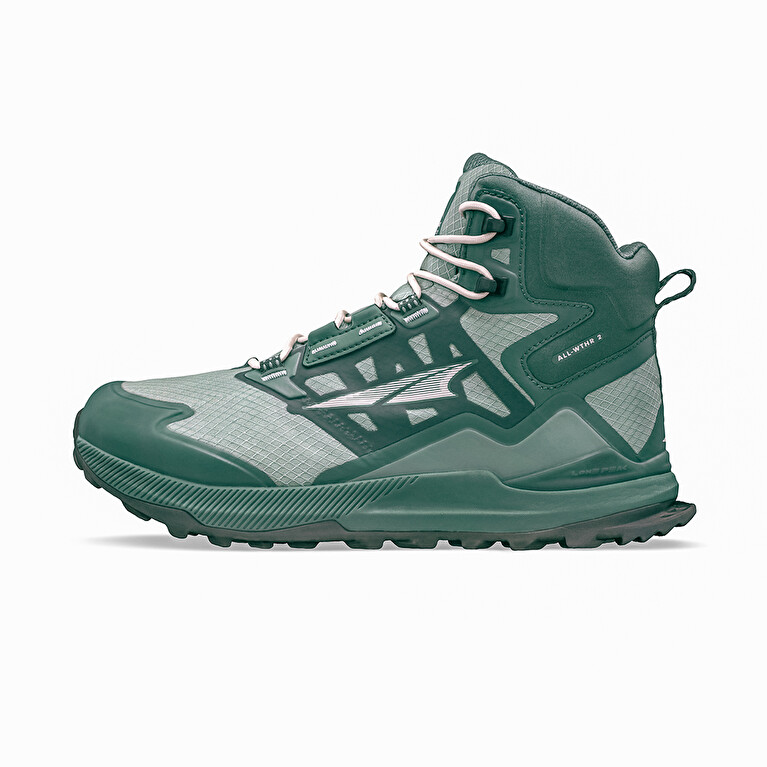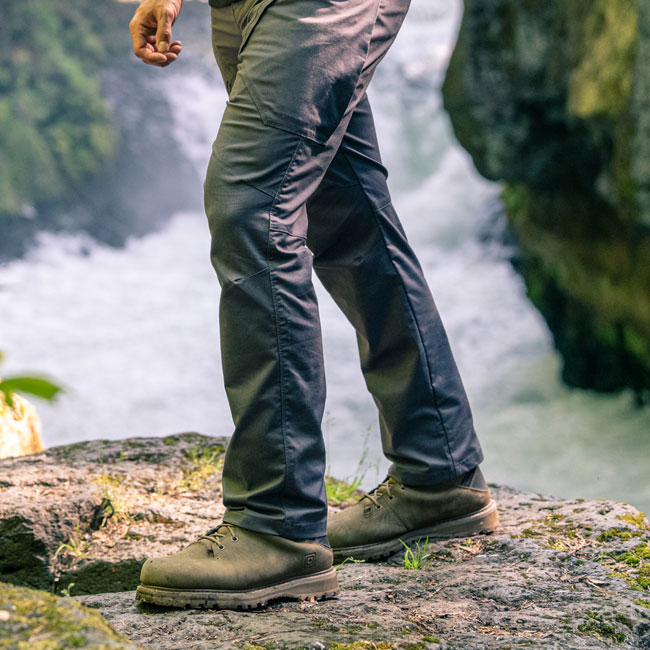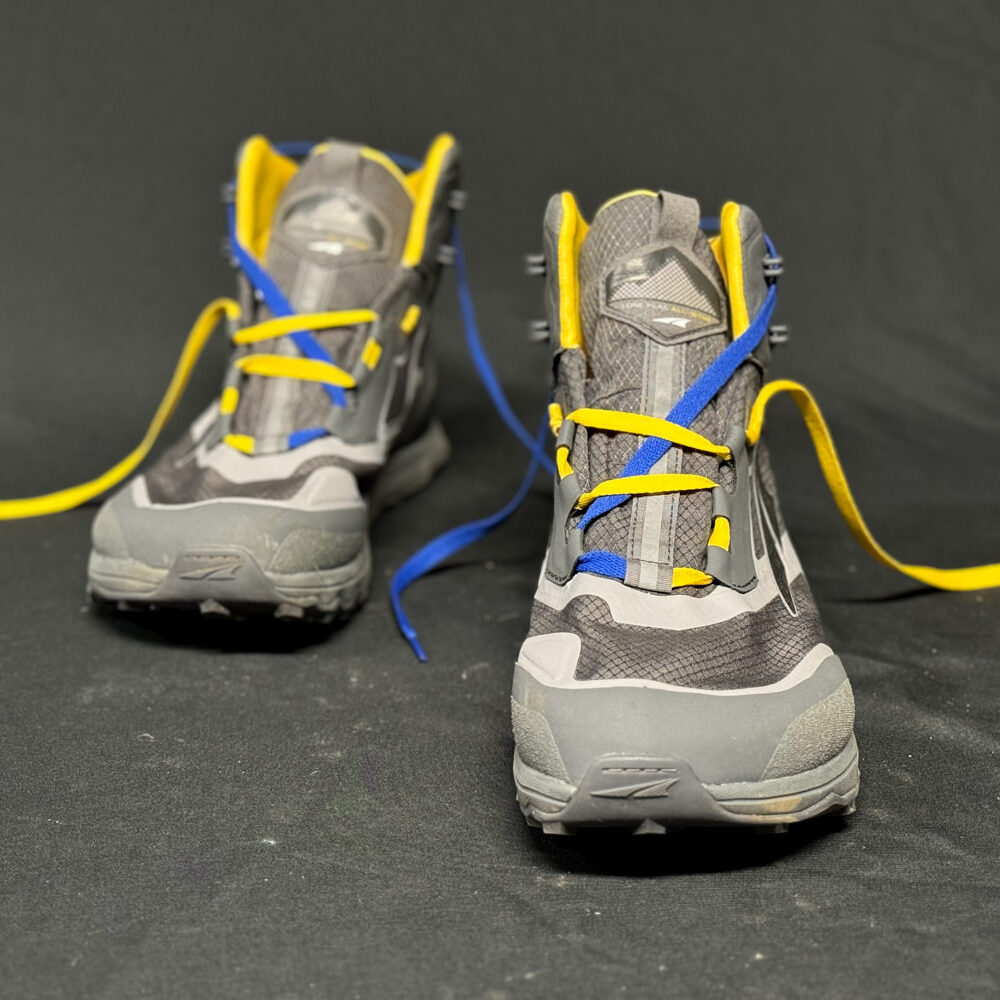Top Picks for Light Hiking Shoes
When it comes to light hiking shoes, having the perfect pair can make all the difference. Ensuring you can move quickly and effortlessly is key for a great outdoor experience. These top picks have been rigorously tested in various terrains, offering the best in comfort, support, and durability.
- Danner Trail 2650: Ideal for general hiking, they offer a light feel with a grippy sole and a comfortable midsole. Quick drying makes them great for summer too.
- Hoka Anacapa Low GTX: Known for cushioning, they are light despite the waterproof feature. If padding is your priority, these could be your go-to shoes.
- Salomon X Ultra 4 GTX: These shoes stand out with top-notch grip. Go for them if you want confidence on slippery or rugged trails.
- Adidas Terrex Swift R3 GTX: These are your stability champions. They provide a secure footing without weighing you down, great for uneven paths.
- Merrell Moab Speed 2: They are tailored for speed hiking. With an emphasis on being lightweight, they have enough cushion and grip for rapid trail walks.
- Salomon Outpulse: These lightweight shoes are perfect for summer hikes with excellent breathability and comfort over long distances.
- Adidas Terrex AX4: A solid pick for those on a budget. They offer good grip and stability without the steep price tag.
Bear in mind the need to balance features like grip, waterproofing, and breathability with weight. Your personal hiking preferences should guide your choice. Whether it’s the feel of the ground beneath, the need for speed, or all-day comfort, there’s a light hiking shoe out here for you.

How to Choose the Right Light Hiking Shoes
Selecting the right light hiking shoes can transform your outdoor excursions. Here are some tips to help you pick your perfect pair:
- Consider Terrain: Shoes should match the terrain you frequent. Smooth trails differ from rocky paths.
- Assess Comfort: Try on various models. Make sure they’re snug but not tight. Leave room for toes.
- Gauge Support: Shoes with good arch and ankle support can prevent injuries and reduce fatigue.
- Examine Durability: Choose shoes with robust materials to withstand regular use.
- Factor In Weather: If you hike in rain or wet conditions, opt for waterproof shoes.
- Prioritize Grip: Look for shoes with lugs and a sole that grips well for safety.
- Test Flexibility: Shoes should bend easily, allowing natural foot movement.
- Weigh Breathability: For hot climates, breathable fabrics keep feet cool and dry.
Each feature holds importance based on individual hiking style and destination. Balance these factors to find shoes that make your hikes enjoyable and comfortable.
Key Features to Look for in Light Hiking Shoes
Selecting the best light hiking shoes means looking for key features that enhance performance and comfort. When you’re scouring the market for a new pair, prioritize these essential characteristics:
- Weight: A lighter shoe allows for nimbler movement and less fatigue over distances.
- Grip and Traction: Deep lugs and quality soles provide stability on varied terrains.
- Comfort and Fit: Opt for shoes that offer a supportive fit and adequate cushioning.
- Durability: Tough materials withstand rugged trails and extend shoe life.
- Support: Good arch and ankle support reduce injury risk and improve comfort.
- Breathability: Airy materials keep feet dry, crucial for hot climates.
- Waterproofing: For wet conditions, a waterproof but breathable membrane is key.
- Flexibility: Look for a balance between a sturdy build and the ability to bend with your foot.
Each feature contributes to your overall hiking experience, so choose based on the conditions you’ll face most often. Always try on multiple options and walk around to get a true sense of their fit and capabilities. Remember, the best light hiking shoes are the ones that meet your specific trail needs while offering day-long comfort.
The Benefits of Wearing Light Hiking Shoes
When you lace up a pair of light hiking shoes, you’re gearing up for more than just a trek. Let’s explore the multiple benefits these shoes bring to your outdoor adventures:
- Reduced Fatigue: Lighter shoes mean less energy spent with every step, leading to improved endurance on long trails.
- Increased Speed: Shave time off your hikes with shoes that won’t hold you back. Swift movements are easier with less weight on your feet.
- Enhanced Comfort: Say goodbye to bulky, restrictive footwear. Light hiking shoes provide the comfort needed to keep going from dawn till dusk.
- Quick Adaptability: Transition seamlessly between various terrains with the agility offered by lightweight design.
- Better Breathability: Many light hiking shoes prioritize airflow, which keeps feet cool and helps prevent blisters and discomfort.
- More Natural Movement: Light hiking shoes flex with your feet, allowing for a more natural gait and reducing strain on joints.
- Simplified Travel: Packing these shoes for a hiking trip is a breeze due to their compact and lightweight nature.
- Economical Strides: Light hiking shoes often wear out less quickly than heavier models, making them a cost-effective option over time.
Wearing light hiking shoes is a game-changer for hikers seeking agile and responsive footwear. With these advantages, it’s easy to see why many outdoor enthusiasts make the switch to lighter gear for their expeditions.
Light Hiking Shoes for Different Terrains
Choosing the right light hiking shoes also depends on the specific terrains you plan to explore.
- Smooth and Groomed Trails: A lighter shoe with moderate grip works well. You’ll enjoy flexibility for comfortable walking.
- Rocky or Uneven Paths: Look for shoes with strong traction and sturdy soles. They should guard your feet against sharp rocks.
- Muddy or Slippery Surfaces: Shoes with deep lugs and waterproof features are best. They help keep your footing secure and feet dry.
- Mixed Terrain: If your hikes vary, select a versatile shoe. Aim for a balance of grip, comfort, and durability.
Each terrain type poses its challenges, and your shoes should help you meet them. Light hiking shoes designed for specific terrains improve your hiking experience by providing the right support, comfort, and protection as you walk, climb, or scramble across the landscape.
Waterproof vs Non-Waterproof Light Hiking Shoes
When picking light hiking shoes, the choice between waterproof and non-waterproof is crucial. Let’s examine when and why you might choose one over the other:
Water-Resistant Advantages:
- Keeps Feet Dry: Essential for crossing streams or hiking in rain.
- Better Protection: Blocks moisture and safeguards against damp environments.
- All-Season Use: Suitable for various conditions, from wet spring hikes to snowy trails.
Non-Waterproof Benefits:
- Enhanced Breathability: Feet stay cool and dry, reducing the risk of blisters.
- Lighter Weight: Generally less material means a lighter shoe for faster movement.
- Quicker Drying: No waterproof barrier means moisture escapes, and shoes dry out faster.
Considerations for Your Choice:
- Climate and Season: Waterproof for wet areas and seasons; non-waterproof for dry and hot.
- Hiking Frequency: Occasional hikers in mixed conditions may benefit from waterproof shoes.
- Terrain Type: Non-waterproof might be better for well-maintained or hot, dry trails.
Your personal preference, typical hiking conditions, and weather patterns should guide your decision. Balancing the need for dryness with breathability will ensure comfort and enjoyment on the trail.
Budget-Friendly Light Hiking Shoes Options
Finding light hiking shoes that are kind to your wallet doesn’t mean sacrificing quality or performance. Many brands offer affordable options that still provide the features necessary for an enjoyable hike. Here are some budget-friendly light hiking shoes that offer a good balance of cost and functionality:
- Durability at a Lower Price: Look for models using strong materials that may not have the premium brand name but offer lasting use.
- Essential Features: Focus on shoes that provide essential attributes like decent grip and comfort, without the extras that drive up the cost.
- Sale Seasons: Purchase during sales to get higher-priced shoes at a discount.
- Previous Year’s Models: Opt for past season designs. They often come at reduced prices while still delivering great performance.
- Multi-Purpose Footwear: Consider shoes versatile for hiking and everyday use, giving you more value.
Remember, while cost is a factor, it’s crucial to ensure your chosen shoes meet your hiking needs. Cheap shoes that don’t support your feet well can lead to discomfort, or worse, injury. Weigh cost against function to find the best affordable light hiking shoe options for your adventures.
Care and Maintenance Tips for Light Hiking Shoes
Caring for your light hiking shoes is crucial to prolong their lifespan and maintain their performance. Here are some straightforward and effective tips to keep your shoes in top condition:
- Regular Cleaning: After each hike, brush off dirt and debris. For a deeper clean, use mild soap and water, and scrub gently.
- Proper Drying: Avoid direct heat sources. Instead, let your shoes air dry naturally. Removing insoles can speed up the process.
- Odor Control: To manage odors, sprinkle baking soda inside your shoes overnight and tap out the excess in the morning.
- Conditioning: If your shoes have leather elements, apply a leather conditioner periodically to prevent drying and cracking.
- Storage: Store your hiking shoes in a cool, dry place away from sunlight to avoid material degradation.
- Rotation: If possible, rotate between pairs to give each one adequate time to air out between hikes.
- Waterproofing Maintenance: For waterproof shoes, reapply a waterproofing treatment as needed to maintain their water-resistant properties.
By following these simple care steps, you can ensure your light hiking shoes remain comfortable, supportive, and ready for your next outdoor adventure.




